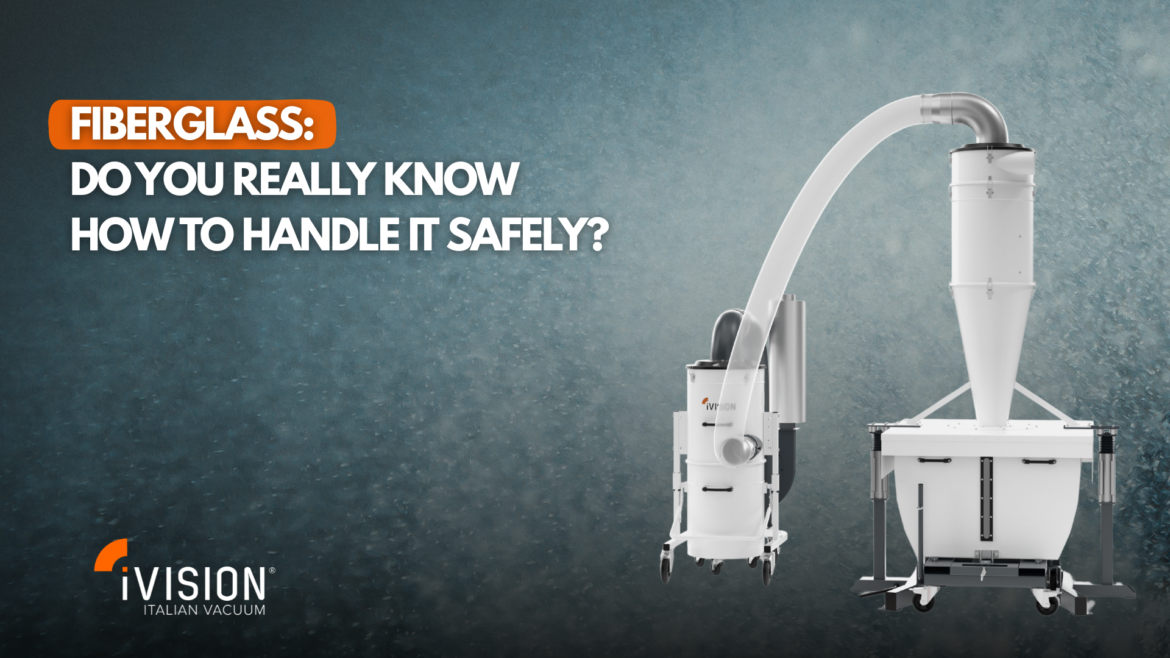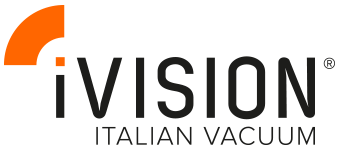
Fiberglass is a composite material consisting of very thin glass threads, woven together to form a strong but lightweight structure. These filaments are obtained by melting glass at high temperatures and then drawing it through a die. The result is a material with excellent mechanical properties, resistant to heat and corrosion, and with a low specific weight.
Thanks to these characteristics, fibreglass is used in numerous industrial sectors, including:
• Electronics industry → as an insulating base in printed circuit boards (PCBs)
• Automotive and nautical → for the manufacture of lightweight and resistant components
• Construction → in insulating panels, ventilated walls and cladding
• Aerospace and defence → for high-performance structural applications
• Windows and doors → thanks to Thermofibre, an innovative glass fibre processing technique, which is integrated into PVC profiles instead of traditional steel reinforcements
Risks associated with fibreglass processing
Although advantageous from a technical point of view, the processing of these materials generates abrasive and fine dusts that require specific professional vacuum cleaners to prevent contamination, malfunctions and health risks for operators.
Risk to the health of operators
The dust generated by fibreglass processing consists of microscopic, lightweight particles that can easily disperse in the workplace. Once inhaled, these particles can cause:
- Respiratory tract irritation, such as persistent coughing, breathing difficulties, bronchial inflammation or, in more serious cases, chronic lung disease;
- Skin problems, as the fine fibres can penetrate the surface layer of the skin, causing itching, redness and contact dermatitis;
- Eye discomfort, with a feeling of sand in the eyes, tearing and redness.
Without an adequate extraction system, particles can remain suspended in the air for a long time, contaminating not only the work area but also adjacent spaces. This is a real and constant risk that can lead to non-compliance with safety regulations.
Compromise of finished product quality
In sectors such as precision electronics, aerospace, or the production of components for the medical industry, even minimal amounts of contaminating dust can directly affect:
• The functionality of printed circuit boards (PCBs), with the risk of short circuits or malfunctions due to the deposition of particles on the board;
• The visual quality of the product, with visible contamination on surfaces that must be perfect (e.g. optical components or screens);
• Long-term reliability, as residual glass fibre can alter the electrical and thermal characteristics of a product.
A professional fibreglass extraction system not only protects health, but also becomes an integral part of the quality production process, especially where the “zero defects” principle applies.
Early wear and tear of industrial machinery
Glass fibre is an abrasive material by nature: every particle, however small, has a sharp, hard structure that, over time, acts like sandpaper on all surfaces it comes into contact with.
Without effective extraction, these particles are deposited:
• Inside guides, bearings, spindles and mechanical components, generating friction, slowdowns and blockages;
• On electrical panels, compromising safety and causing false contacts;
• In traditional filters, quickly saturating them and reducing their effectiveness.
The result is an exponential increase in extraordinary maintenance, unexpected machine downtime and premature replacement of critical components. A significant economic loss for any company.
Protecting people, products and machinery from fibreglass requires a professional and tailor-made approach. A suction system designed specifically for this material is not a cost, but an investment in production continuity and certified quality.
What features should a fibreglass vacuum cleaner have?
An industrial vacuum cleaner designed to handle waste produced by fibreglass processing must be specific, powerful and filtering.
Here are the key elements to consider:
1. High-efficiency filtering system
It must include class M or HEPA filters, capable of retaining at least 99.9% of fine particles, including the most hazardous residues.
Models such as those in the PCB or FLAT TABLE line from iVision Vacuum are industrial vacuum systems suitable for vacuuming glass dust. Thanks, for example, to the automatic filter cleaning system (burst or countercurrent), they ensure consistent performance even during intensive processing. In highly critical environments, HEPA filters can be integrated, which are ideal for removing ultra-fine particles in electronic applications or high-sterility laboratories.
The EXTRUSION line, usually used in the aluminium and plastics industry, is also perfectly adaptable to environments where fibreglass is processed, thanks to its high suction power, modular filters and robust cyclonic separation system.
An efficient filtering system not only protects operators, but also optimises the continuity of the production process, avoiding clogging, power loss and unscheduled machine downtime.
2. Side channel blowers
Side channel blowers are particularly suitable for glass fibre extraction because:
• They generate a continuous and powerful air flow, ideal for transporting light and fine dusts such as glass, which tend to remain suspended.
• They do not use oil, so they do not contaminate the environment or the materials being extracted, which is essential in electronic processing or clean environments.
• They are abrasion resistant: their simple and robust design withstands wear caused by sharp particles.
• They require little maintenance, even in harsh conditions, reducing machine downtime.
3. Antistatic and robust construction
Glass fibre can generate static electricity and damage sensitive instruments. A professional vacuum cleaner must include antistatic kits and a structure designed to work even in the vicinity of electronic components.
How to choose the right model for your company?
The choice of the most suitable industrial vacuum cleaner cannot be based on generic criteria. Each production environment has specific characteristics that influence the performance required of the vacuum system.
Here are the main factors to consider:
Quantity of material vacuumed daily
The flow rate and capacity of the vacuum cleaner must be commensurate with the volume of dust or chips produced each day. An undersized system will quickly become clogged, requiring frequent emptying and causing machine downtime. Conversely, an oversized system can be excessively costly. Accurately assessing the average amount of material to be vacuumed is the first step towards making an efficient choice.
Type of machinery used
CNC machines, lathes, milling machines, lasers, or composite material processing machines generate different types of residues, with characteristics (weight, particle size, composition) that influence the choice of vacuum cleaner. For example, fibreglass processing requires a high-efficiency filtering system, while aluminium extrusion produces heavy chips that must be handled with more powerful turbines and large containers.
Presence of dust, metal residues or liquids
Not all vacuum cleaners are suitable for the combined management of solid and liquid materials. The presence of emulsions, oils or lubricants requires models with solid/liquid separation, such as those in the EMULSIO line. In the case of fine dust or abrasive metal residues, it is essential to integrate high-performance filters (class M or HEPA) and wear-resistant structures.
Distance between the vacuum cleaner and the collection point
The distance between the machine that generates the residue and the suction point directly affects pressure drops. The longer the air path, the greater the motor power or turbine efficiency must be. In these cases, a centralised system or the use of side channel blowers can be considered, which are ideal for ensuring a constant flow rate even over long distances.
Filtration requirements and regulatory safety
Each sector has its own regulations: ATEX for explosion-risk environments, ISO for clean rooms, HACCP for food, etc. A compliant vacuum cleaner must offer adequate filtration, certified components and integrated safety systems, such as antistatic grounding or intelligent sensors for real-time monitoring. In many cases, it is useful to opt for 4.0 models to remotely monitor filter status, consumption and maintenance.
Choose someone with real expertise in industrial vacuum cleaning
Choosing the right industrial vacuum cleaner means designing efficiency, preventing problems and protecting every stage of your production process. But doing it alone can be complex. iVision Vacuum is the ideal partner to guide you in this choice. 📩 Contact us today for a free consultation: [email protected]

